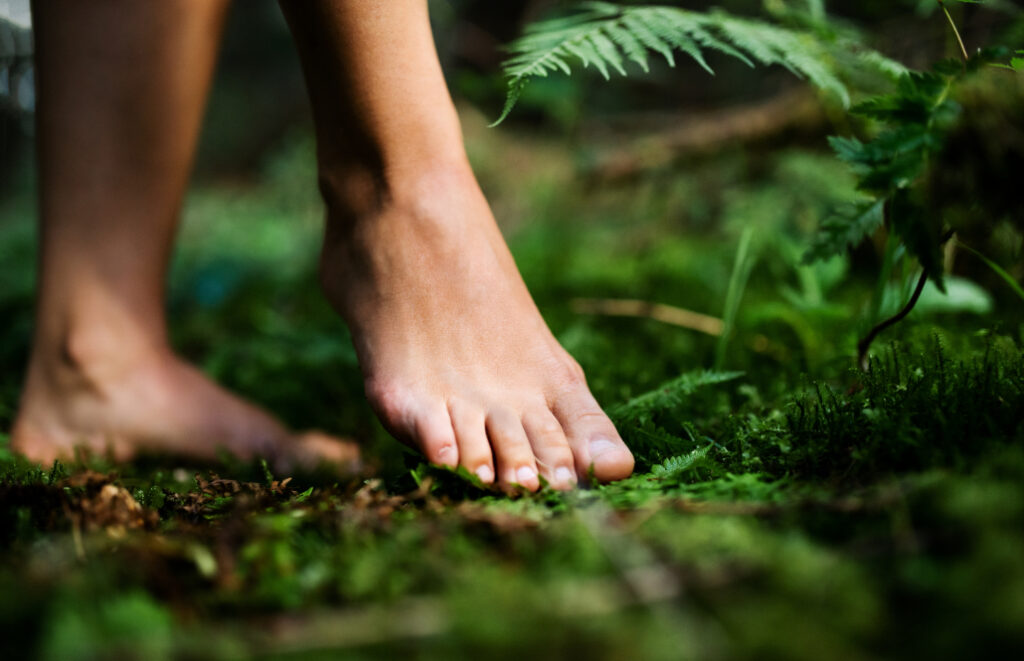Do you ever feel like you’re constantly on the go and don’t have time to relax? If so, grounding therapy may be just what you need. Grounding therapy is a way to connect with the earth and find calm. It can be done by simply spending time outside in nature, or by using an earthing product. In this blog post, we will discuss the benefits of grounding therapy and how to get started!
Contents
What Is Grounding Therapy?
 Grounding Therapy means connecting to the Earth’s energy. The Earth has an abundance of negative ions, which are known to be beneficial for our health. When we are constantly on the go, we are not able to take advantage of these negative ions. This can lead to feelings of anxiety and stress. Grounding Therapy allows us to connect with the Earth’s energy and find calm.
Grounding Therapy means connecting to the Earth’s energy. The Earth has an abundance of negative ions, which are known to be beneficial for our health. When we are constantly on the go, we are not able to take advantage of these negative ions. This can lead to feelings of anxiety and stress. Grounding Therapy allows us to connect with the Earth’s energy and find calm.
There are many ways to ground yourself. The most common way is to go outside barefoot and walk on the grass or in the sand. This allows your body to absorb the negative ions from the Earth. You can also sit or lie down on the ground.
If you live in an urban area, you can ground yourself by touching a metal surface that is in contact with the ground, such as a pipe or a railing. It is also called earthing and is a therapeutic technique that involves electrical reconnection with the Earth.
What Are The Techniques Of Grounding?
The five senses or real things that you can touch are utilized in these methods to assist you move past suffering. The goal is to bring your focus back to the present moment. It is called Physical grounding technique. There are mainly three techniques that are used in grounding therapy. These include:
Physical Grounding Technique
- Walking barefoot outside: Walking on the earth with your bare feet helps you connect with the planet’s energy and allow you to release any negative charge you may be carrying.
- Yoga: Yoga is a great way to ground yourself and connect with your body. It helps to improve balance and flexibility while also promoting relaxation.
- Tai chi: Tai chi is a form of martial arts that involves slow, flowing movements. It can help to ground you and improve your sense of balance and coordination.
- Submersing in water: Taking a bath or shower may be a kind of grounding, especially if you concentrate on the sensation of the water on your skin.
- Spending time in nature: Connecting with nature can help to ground you and can also be very calming. Spend time walking barefoot on the grass, digging your fingers into the soil, or sitting under a tree.
Mental Grounding Technique
In this type, you don’t use any props. You simply use your imagination to bring yourself back to the present. The goal is to shift your focus from the upsetting event by thinking of a peaceful place or happy memory. For instance, you might:
- Make yourself laugh: Make up a goofy joke — the type you’d find on a candy wrapper or popsicle stick, for example. You may also watch anything that makes you laugh, whether it’s a clip from your favorite comedian or show or any other thing.
- Imagine yourself in a serene landscape: Picture yourself in a calm, safe place. It can be somewhere you’ve been before or a place you’ve imagined. Notice the details around you and how you feel in this space.
- Repeat positive affirmations to yourself: Choose a short phrase or sentence that has personal meaning for you. You can repeat it to yourself either out loud or silently.
- Focus on your breath: Start by finding a quiet, comfortable place to sit or lie down. If you’re sitting, make sure your spine is straight and your feet are flat on the ground. Close your eyes and take a few deep breaths. Slowly inhale and exhale, counting to four as you breathe in and out. Pay attention to the sensation of the air moving in and out of your lungs. It is a great way to focus your mind and connect with your inner thoughts and feelings. It can help you feel more grounded and centered.
Emotional Grounding Technique
This type uses emotions to help you connect with the present. The goal is to become aware of and experience your feelings in a new, and in a more positive way. For example:
- Listening to calm music: Music can have a very soothing effect on the mind and body. Listening to calming music can help you feel more grounded and relaxed.
- Journalizing: Expressing your thought, emotions on a piece of paper or journal and you can also list positive things in your notebook. These things must bring joy, by visualizing each of them briefly.
- Practice self- kindness: One of the most important things you can do for yourself when you’re feeling overwhelmed is to practice self-kindness. Be gentle with yourself, and don’t beat yourself up for feeling upset or stressed. Accepting your feelings and giving yourself a break will help you feel better in the long run.
- Talk to a friend or therapist: By talking to a friend, therapist or a counselor a person must feel de-stressed.
These are techniques of grounding through which an individual cope with stress and anxiety. It is a slow but effective process which requires practice and patience to master it.
How Does It Work?
 Grounding therapy works by connecting the body to the Earth. It can be done through barefoot contact with the ground, or by using earthing products like mats or sheets.
Grounding therapy works by connecting the body to the Earth. It can be done through barefoot contact with the ground, or by using earthing products like mats or sheets.
The connection between the body and the Earth helps to regulate the nervous system, reduce stress, improve sleep, and reduce inflammation. It also increases the healing speed of wounds and helps to ease pain, restore balance to the body, and increase energy levels.
Grounding therapy is a simple, natural way to reduce stress and improve your overall health. It has a pain-relieving ability and can also improve mental clarity.
The next time you’re feeling anxious or stressed, consider using grounding techniques to help reduce your anxiety and stress.
There are a variety of different techniques that you can try. Talk to a mental health professional about which ones may work best for you.
How Grounding Therapy Is Beneficial?
There are many benefits associated with grounding, including:
- Reducing stress: It reduces stress and anxiety and make person stress free.
- Negative emotions: It reduces negative emotions, and suicidal thoughts.
- Increasing feelings of calm, peace, and safety: This increases the feeling of calm, peace and security.
- Increase focus and concentration: It can increase focus, attention span of an individual.
- Reduce chronic fatigue: If you suffer from chronic fatigue, grounding may help to improve your energy levels and overall sense of well-being.
- Sleep disorders: If you have difficulty sleeping, grounding may help you to fall asleep more quickly and sleep more soundly.
- Reduce anxiety: Grounding can help to reduce anxiety by providing a sense of calm and safety.
- PTSD: It is possible to relieve symptoms of PTSD, such as dissociation, flashbacks, and intrusive thoughts, by using grounding techniques.
The benefits of grounding therapy may arise from the feeling of reconnecting to nature. Regardless, there is little harm in doing it.
Conclusion
Grounding therapy is an effective way to connect with the Earth and find calm. It is a simple therapy that grounding can be done anywhere, anytime. All you need is a piece of ground and you’re good to go!
Grounding therapy is a self-love tool that may help people relax and be at peace. In the morning you can try any of the grounding therapy to relax your mind. Give it a try next time you’re feeling stressed or anxious, and see for yourself how calming and centering it can be. Anyone, anywhere, and anytime can use grounding therapy to relax and achieve peace. It has no negative side effects and is quite inexpensive.
For more tips and guidance, you can reach out to Therapy Mantra. The team of professional counselors is more than happy to help you in your journey to recovery. Contact us today to learn more about our services. You can also book an online therapy session or download our free Android or iOS app.


